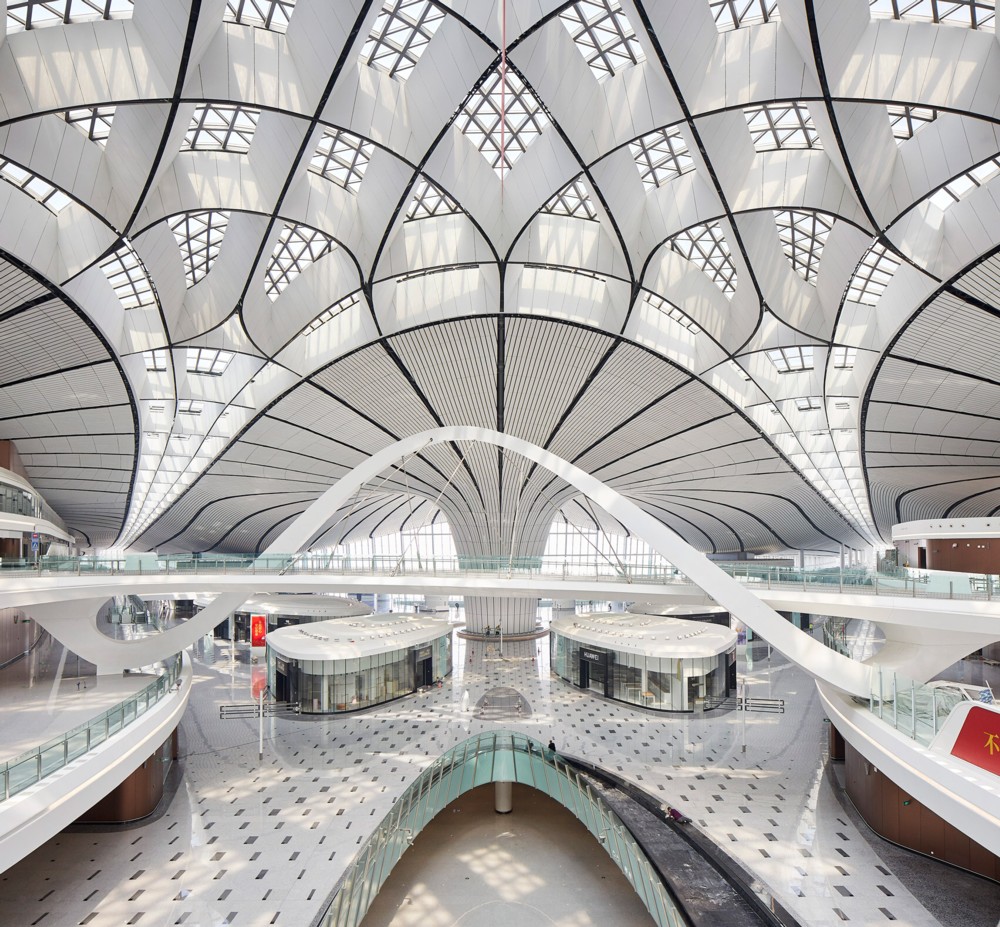You can seldom tell where an item of modern architecture is in the world just by looking at a photo or fake-photo of it. But, if you know your modern architecture, you can usually date it. This is because what look-at-me architecture looks like depends on what can, at any particular moment in architectural history, be done. When a new technique is devised, this new technique is used to make a kind of architecture that has not been seen before, and which hence attracts maximum attention.
Zaha Hadid is the firm that most perfectly exemplifies this latest phase of architectural modernity, because they are the people who have taken the latest new-thing-we-can-now-do to its most extreme limits:
Picture (hard to tell if it’s fake or real – guess: bit of both) found in this dezeen report on a new mega-airport in China.
What-we-can-now-do is keep track of lots of different bits and bobs in a building, so different that almost all these bits and bobs are unique in shape, with … computers. Time was when, if the Big Boss said: I want it to look like … this (draws weird shape on back of restaurant menu) there then followed a long to-and-fro argument between Big Boss and the Underlings (speaking on behalf of what is doable as opposed to merely dreamable), until the slightly weird but usually deeply disappointing and mis-shapen object finally appeared. Occasionally, something truly weird, like the Sydney Opera House, did emerge, looking remarkably like the back-of-the-restaurant-menu original. But, mostly the fantasy-versus-actually-doable back-and-forth took all the juice out of the original. It would have been simpler to scrap it and do something a bit more creative than usual with easily drawable and trackable rectangles.
Now? Big Boss can draw the weird shape, and then the massed slaves can duly construct the Big Thing, so that it really does look like the cover of a science fiction story.
Computers can now draw, and – crucially – redraw, anything. When a curve needs to change a bit, to fit in – I don’t know – some more luggage handlers or passport inspectors or a bigger private lair for airport surveillance creeps – the computer can redraw the new design, as re-ordained by the Big Boss on the back of another restaurant menu, in seconds. That kind of rejigging used to take months and frankly, couldn’t be done without costs crashing through the weirdly but in the end rather disappointingly shaped roof.
Give it a few years, and this Because-Now-We-Can! style will look horribly passé. For many, I’m guessing it already does. But for now, we now build buildings like this … because now we can!


I don’t often get excited about architecture but that is quite something.